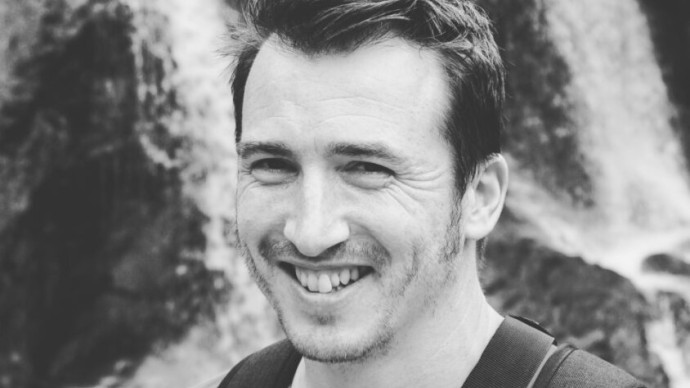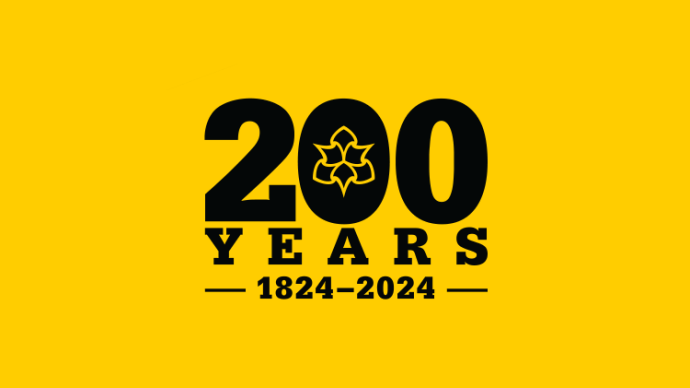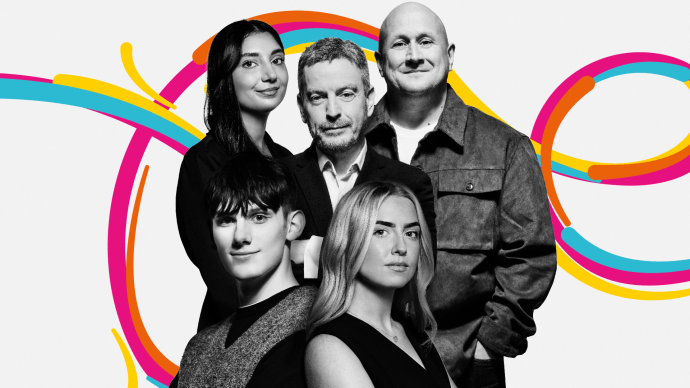A Q&A with alumnus James Corner
A Q&A with alumnus James Corner

Standfirst
A key part of our 200th anniversary is celebrating the successes of our alumni and demonstrating the impact of their work.
In this Q&A piece, we talk to the innovative landscape architect, James Corner. He is the Founding Partner and Chief Executive of Field Operations, an international landscape architecture and urban design practice based in New York City.
Main story
James graduated from the University with a first-class BA (Hons) in Landscape Design in 1983. He was awarded an honorary doctorate in 2019 for advancing the fields of landscape architecture and urbanism and for his commitment to urban green spaces and regeneration projects.
He has had an award-winning career. Recognised with the National Design Award, the American Academy of Arts and Letters Award in Architecture and the AA&D Black Pencil Award. In 2007, Time Magazine named him as one of the 10 most influential designers.
His work has been exhibited at the New York Museum of Modern Art, the Royal Academy of Art in London, and the Venice Biennale. James is also known for his teaching, public speaking, and writing.
Here, you can learn about his success story and his insights.
What brought you to Manchester Met?
I did very well in my A Levels, I could have gone to any University, I suppose, and I chose to come to what was then Manchester Polytechnic. I chose it primarily because of the quality of the educational programme and the reputation of the School of Architecture and Design, but also because of the city.
I loved the vibrancy of Manchester, and I loved the context of the school in the middle of the city. It felt real, it felt edgy, there was a good vibe – all that Mancunian attitude, character, and humour. Manchester is still such a dynamic city of arts, culture, and music, with a compelling global outlook, and I am sure this continues to inform and inspire the University to this day.
What is one of your favourite memories of Manchester?
Well, in addition to my various educational experiences, the social side of things was amazing. The beginning of the ’80s saw the rise of the best music and clubs – with The Police, U2, The Cure, Depeche Mode, The Smiths – I mean, wow, what a time to be young and enjoying that scene.
And I had the most fabulous friends – people from all over the UK, as well as internationally. It was a great time of learning independence, enjoying new friendships and experiences, and exploring urban life.
What was the biggest learning point that you took from your studies at Manchester Met into your career?
After graduating from Manchester in 1983, I went to the US to study for my Master’s degree at the University of Pennsylvania. One of the things that struck me was just how well prepared I was for advanced graduate studies, in fact perhaps even over-prepared.
The teachers and curriculum at Manchester had clearly done an excellent job at providing me with first-class professional skills, creativity, criticality, and the confidence to advance easily into my career.
Perhaps the biggest learning point was how to think for myself, how to take risks, to experiment and push boundaries. It was an excellent educational experience in many different aspects, balancing both skills with imagination and independence.
What does urban and landscape design bring to society?
I have had the good fortune to become a leader in my field, with a large number of amazing projects around the world – including New York’s High Line, London’s South Park at Queen Elizabeth Olympic Park, Hong Kong’s Avenue of the Stars, and San Francisco’s Presidio Tunneltops, for example.
These projects all focus on the physical design of the public realm in cities – parks, waterfronts, promenades, streets, squares, and other public spaces where people gather, stroll, meet and experience the city.
Such places deeply enrich people’s lives, their sense of connection to where they live, their sense of community with others, and their overall physical health and psychological well-being.
The fact that these projects bring nature into the city also helps with ecological and environmental factors, such as moderating climate, enhancing biodiversity, managing stormwater, and improving air quality.
What are the emerging design trends that graduates need to be equipped to respond to?
Design cannot be thought of as an isolated activity, as if an indulgence or a nice but non-essential “extra.” Instead, design needs to be understood as creative problem-solving, and making the world better not simply through aesthetics but more through improving how things work and how people live and experience the world in new ways.
In this sense, design is simultaneously specialised and generalised – one needs to be a master of their medium, but also be open to collaboration and exchange with other disciplines.
And of course, with specific regard to landscape and urbanism, issues of climate, environment and health are paramount – our projects create new forms of city, new forms of living, new forms of interaction and new forms of behaviour that allow people to better adapt to the many environmental (and social) challenges of our time.
What are the key attributes needed to excel as an architect?
Architects create buildings and the constructed environment. These are physical phenomena, requiring great skill with organisational, spatial, material, and technical parameters.
In addition to these precise skills, there must be an unlimited sense of imagination and creativity, striving to make the world a better place to live in. And so, this balance of skill with imagination, and precision with invention, is fundamental to good architecture.
What advice would you offer to a graduate who is just starting out?
Work as hard as you possibly can to be the best that you can be. No professional career is easy, and it is said that it takes at least 12,000 hours of practice to become even basically skilled at something.
So, work hard, and keep pushing forward. Also, be aspirational and ambitious – have a lofty vision or goal that you are aiming for and strive to achieve that goal through your work.
Choose your friends and relationships carefully, and where you choose to live and work, as this environment is what will inspire, sustain, and support you over time.
Which projects are you the most proud of?
It is impossible to say which is best as they are all different, with their own characteristics. But in this case, New York’s High Line has achieved such great acclaim and notoriety around the world, that it is probably the one I am most proud of.
It is truly unique and has stood the test of time – hitting its 25th anniversary this year and looking better than ever as things continue to grow and evolve. It has shaped the entire neighbourhood around it and delighted millions of visitors from all around the world over the years.
What’s next?
We are currently looking at the re-design of New York’s famous Fifth Avenue, connecting Bryant Park to Central Park whilst reinvigorating this global shopping corridor. The Camden High Line in London is another exciting project that will be taking shape in the next year or so. And we now have some important urban projects in India, that are looking to create vibrant new communities and developments in a country that is rapidly modernizing.
Alongside your wife, Anne-Marie Corner, you continue to be a very generous donor, why is this important to you?
My wife, Anne-Marie, is a distinguished graduate of the Bio-Chemistry Department, and she, like me, feels that we both received the most amazing education at Manchester Met. It provided the very foundation for the different and varied successes we have each enjoyed.
We both feel a sense of responsibility to help pay back the University and to perhaps help specific individuals – those first-generation students or others of limited means – get a head-start in life.
There is nothing more gratifying than to see people of modest backgrounds rise through education and their own hard work, succeeding to levels they had never imagined possible.
Meet the Corners
James got his award in 2019 for advancing the fields of landscape architecture and urbanism and his commitment to urban green spaces and regeneration projects.
His wife, Anne-Marie, was awarded an honorary Doctor of Science (DSc) in 2021, recognising her achievements in science and innovation.
They are the first married couple to be awarded honorary doctorates.

More stories
Discover more of our creative alumni
-
![A headshot of Chris Sayer smiling at the camera]()
Emmy Award-Winning Alumnus, Chris Sayer
Find out more -
![Alumni Ryan Gander is sat being interviewed by a female]()
An interview with Ryan Gander
Find out more -
![Simon Stephens]()
Award-winning scriptwriter, Professor Stephens
Find out more -
![A headshot of Liz Newell who is smiling at the camera]()
An Interview with Alumna Elizabeth Newell
Find out more -
![Ibukun Baldwin sat smiling at the camera]()
An interview with Ibukun Baldwin and Professor Alice Kettle
Find out more
About 200 years
Manchester Met celebrates two centuries of driving progress through excellent education and research.
-
![200 years 1824-2024]()
200 years
Find out more -
![Siemens Chief Executive Carl Ennis posing with the firms degree apprentices]()
Driving economic growth
Find out more -
![Two nurses standing together and smiling]()
Transforming Health
Find out more -
![A digital image of the university's arts buildings]()
Championing Creative Excellence
Find out more









